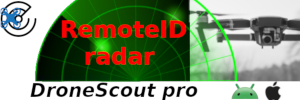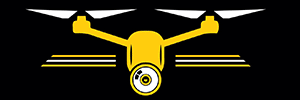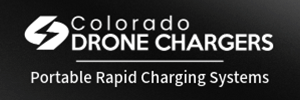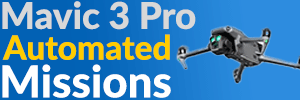Email from FAA regarding the new law:
"On October 5, 2018, the President signed the
FAA Reauthorization Act of 2018. The Act establishes new conditions for recreational use of drones and immediately repeals the Special Rule for Model Aircraft.
"The agency is evaluating the impacts of this change in the law and how implementation will proceed. The Reauthorization Act cannot be fully implemented immediately, please continue to follow all current policies and guidance with respect to recreational use of drones:
- Fly for hobby or recreation only
- Register your model aircraft
- Fly within visual line-of-sight
- Follow community-based safety guidelines and fly within the programming of a nationwide community-based organization
- Fly a drone under 55 lbs. unless certified by a community-based organization
- Never fly near other aircraft
- Never fly near emergency response efforts
"Updated direction and guidance will be provided as the FAA implements this new legislation."
Interesting no mention of flying near an airport. Maybe an oversight?
It will be based on class of airspace instead:
FAA Reauthorization Act of 2018
Section 349 - recreational use of sUAS
SEC. 349. EXCEPTION FOR LIMITED RECREATIONAL OPERATIONS OF UNMANNED
AIRCRAFT.
(a) In General.--Chapter 448 of title 49, United States Code, as
added by this Act, is further amended by adding at the end the
following:
Sec. 44809. Exception for limited recreational operations of unmanned
aircraft
(a) In General.--Except as provided in subsection (e), and
notwithstanding chapter 447 of title 49, United States Code, a person
may operate a small unmanned aircraft without specific certification or
operating authority from the Federal Aviation Administration if the
operation adheres to all of the following limitations:
(1) The aircraft is flown strictly for recreational
purposes.
(2) The aircraft is operated in accordance with or within
the programming of a community-based organization's set of
safety guidelines that are developed in coordination with the
Federal Aviation Administration.
(3) The aircraft is flown within the visual line of sight
of the person operating the aircraft or a visual observer co-
located and in direct communication with the operator.
(4) The aircraft is operated in a manner that does not
interfere with and gives way to any manned aircraft.
(5) In Class B, Class C, or Class D airspace or within
the lateral boundaries of the surface area of Class E airspace
designated for an airport, the operator obtains prior
authorization from the Administrator or designee before
operating and complies with all airspace restrictions and
prohibitions.
(6) In Class G airspace, the aircraft is flown from the
surface to not more than 400 feet above ground level and
complies with all airspace restrictions and prohibitions.
(7) The operator has passed an aeronautical knowledge and
safety test described in subsection (g) and maintains proof of
test passage to be made available to the Administrator or law
enforcement upon request.
(8) The aircraft is registered and marked in accordance
with chapter 441 of this title and proof of registration is
made available to the Administrator or a designee of the
Administrator or law enforcement upon request.
(b) Other Operations.--Unmanned aircraft operations that do not
conform to the limitations in subsection (a) must comply with all
statutes and regulations generally applicable to unmanned aircraft and
unmanned aircraft systems.
(c) Operations at Fixed Sites.--
(1) Operating procedure required.--Persons operating
unmanned aircraft under subsection (a) from a fixed site within
Class B, Class C, or Class D airspace or within the lateral
boundaries of the surface area of Class E airspace designated
for an airport, or a community-based organization conducting a
sanctioned event within such airspace, shall make the location
of the fixed site known to the Administrator and shall
establish a mutually agreed upon operating procedure with the
air traffic control facility.
(2) Unmanned aircraft weighing more than 55 pounds.--A
person may operate an unmanned aircraft weighing more than 55
pounds, including the weight of anything attached to or carried
by the aircraft, under subsection (a) if--
(A) the unmanned aircraft complies with standards
and limitations developed by a community-based
organization and approved by the Administrator; and
(B) the aircraft is operated from a fixed site as
described in paragraph (1).
(d) Updates.--
(1) In general.--The Administrator, in consultation with
government, stakeholders, and community-based organizations,
shall initiate a process to periodically update the operational
parameters under subsection (a), as appropriate.
(2) Considerations.--In updating an operational parameter
under paragraph (1), the Administrator shall consider--
(A) appropriate operational limitations to
mitigate risks to aviation safety and national
security, including risk to the uninvolved public and
critical infrastructure;
(B) operations outside the membership,
guidelines, and programming of a community-based
organization;
(C) physical characteristics, technical
standards, and classes of aircraft operating under this
section;
(D) trends in use, enforcement, or incidents
involving unmanned aircraft systems;
(E) ensuring, to the greatest extent practicable,
that updates to the operational parameters correspond
to, and leverage, advances in technology; and
(F) equipage requirements that facilitate safe,
efficient, and secure operations and further integrate
all unmanned aircraft into the national airspace
system.
(3) Savings clause.--Nothing in this subsection shall be
construed as expanding the authority of the Administrator to
require a person operating an unmanned aircraft under this
section to seek permissive authority of the Administrator,
beyond that required in subsection (a) of this section, prior
to operation in the national airspace system.
(e) Statutory Construction.--Nothing in this section shall be
construed to limit the authority of the Administrator to pursue an
enforcement action against a person operating any unmanned aircraft who
endangers the safety of the national airspace system.
(f) Exceptions.--Nothing in this section prohibits the
Administrator from promulgating rules generally applicable to unmanned
aircraft, including those unmanned aircraft eligible for the exception
set forth in this section, relating to--
(1) updates to the operational parameters for unmanned
aircraft in subsection (a);
(2) the registration and marking of unmanned aircraft;
(3) the standards for remotely identifying owners and
operators of unmanned aircraft systems and associated unmanned
aircraft; and
(4) other standards consistent with maintaining the
safety and security of the national airspace system.
(g) Aeronautical Knowledge and Safety Test.--
(1) In general.--Not later than 180 days after the date
of enactment of this section, the Administrator, in
consultation with manufacturers of unmanned aircraft systems,
other industry stakeholders, and community-based organizations,
shall develop an aeronautical knowledge and safety test, which
can then be administered electronically by the Administrator, a
community-based organization, or a person designated by the
Administrator.
(2) Requirements.--The Administrator shall ensure the
aeronautical knowledge and safety test is designed to
adequately demonstrate an operator's--
(A) understanding of aeronautical safety
knowledge; and
(B) knowledge of Federal Aviation Administration
regulations and requirements pertaining to the
operation of an unmanned aircraft system in the
national airspace system.
(h) Community-based Organization Defined.--In this section, the
term community-based organization' means a membership-based
association entity that--
(1) is described in section 501(c)(3) of the Internal
Revenue Code of 1986;
(2) is exempt from tax under section 501(a) of the
Internal Revenue Code of 1986;
(3) the mission of which is demonstrably the furtherance
of model aviation;
(4) provides a comprehensive set of safety guidelines for
all aspects of model aviation addressing the assembly and
operation of model aircraft and that emphasize safe
aeromodelling operations within the national airspace system
and the protection and safety of individuals and property on
the ground, and may provide a comprehensive set of safety rules
and programming for the operation of unmanned aircraft that
have the advanced flight capabilities enabling active,
sustained, and controlled navigation of the aircraft beyond
visual line of sight of the operator;
(5) provides programming and support for any local
charter organizations, affiliates, or clubs; and
(6) provides assistance and support in the development
and operation of locally designated model aircraft flying
sites.
(i) Recognition of Community-based Organizations.--In
collaboration with aeromodelling stakeholders, the Administrator shall
publish an advisory circular within 180 days of the date of enactment
of this section that identifies the criteria and process required for
recognition of community-based organizations.''.
(b) Technical and Conforming Amendments.--
(1) Table of contents.--The table of contents for chapter
448 of title 49, United States Code, as added by this Act, is
further amended by adding at the end the following:
44809. Exception for limited recreational operations of unmanned
aircraft.
(2) Repeal.--Section 336 of the FAA Modernization and
Reform Act of 2012 (49 U.S.C. 40101 note) and the item relating
to that section in the table of contents under section 1(b) of
that Act are repealed.











